Ye Ren
UWC: Unit-wise Calibration Towards Rapid Network Compression
Jan 17, 2022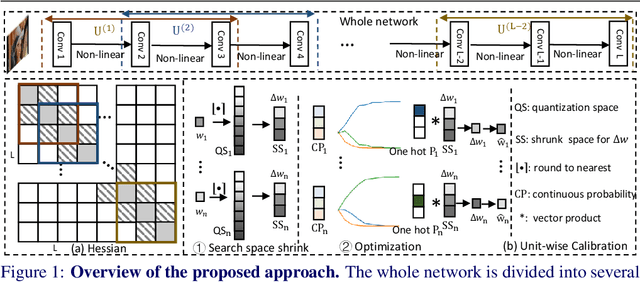
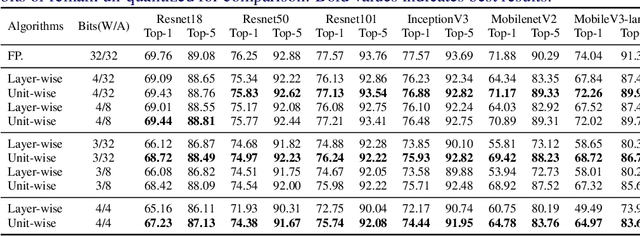
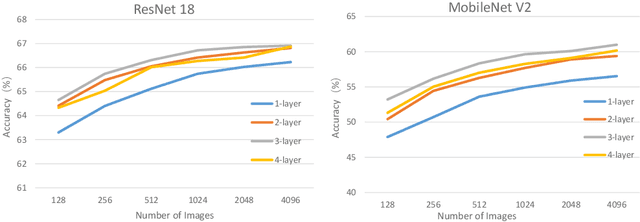
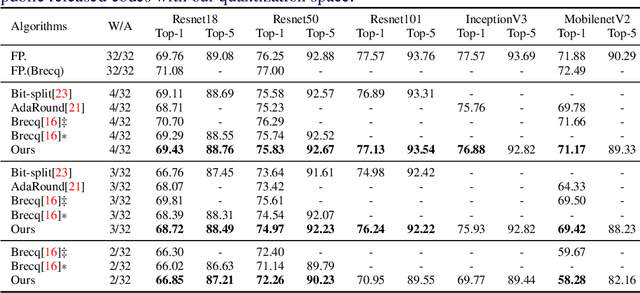
Abstract:This paper introduces a post-training quantization~(PTQ) method achieving highly efficient Convolutional Neural Network~ (CNN) quantization with high performance. Previous PTQ methods usually reduce compression error via performing layer-by-layer parameters calibration. However, with lower representational ability of extremely compressed parameters (e.g., the bit-width goes less than 4), it is hard to eliminate all the layer-wise errors. This work addresses this issue via proposing a unit-wise feature reconstruction algorithm based on an observation of second order Taylor series expansion of the unit-wise error. It indicates that leveraging the interaction between adjacent layers' parameters could compensate layer-wise errors better. In this paper, we define several adjacent layers as a Basic-Unit, and present a unit-wise post-training algorithm which can minimize quantization error. This method achieves near-original accuracy on ImageNet and COCO when quantizing FP32 models to INT4 and INT3.
SOIT: Segmenting Objects with Instance-Aware Transformers
Dec 23, 2021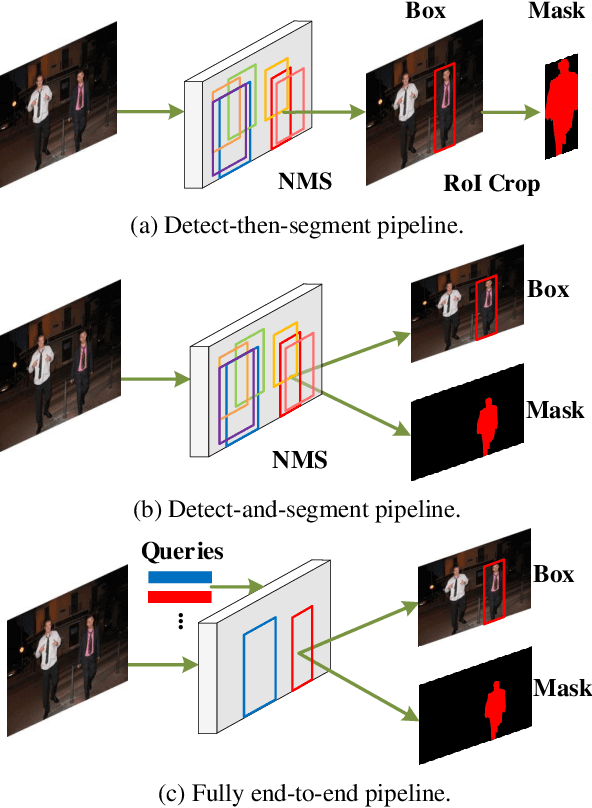
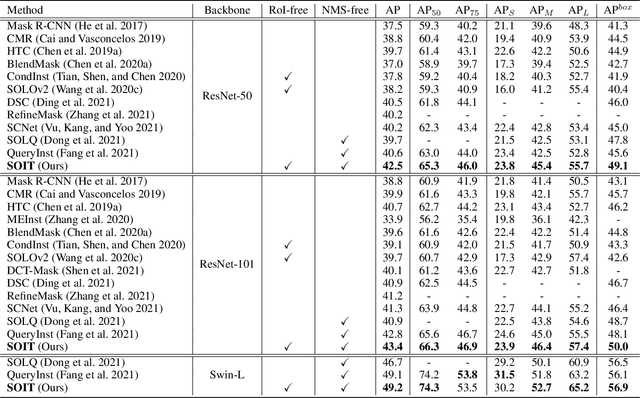
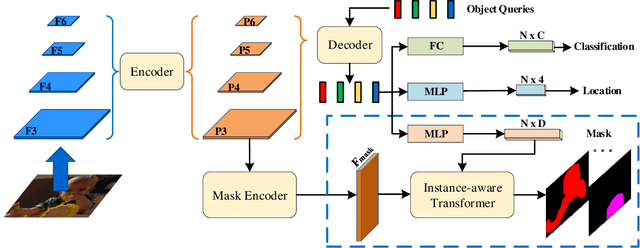

Abstract:This paper presents an end-to-end instance segmentation framework, termed SOIT, that Segments Objects with Instance-aware Transformers. Inspired by DETR \cite{carion2020end}, our method views instance segmentation as a direct set prediction problem and effectively removes the need for many hand-crafted components like RoI cropping, one-to-many label assignment, and non-maximum suppression (NMS). In SOIT, multiple queries are learned to directly reason a set of object embeddings of semantic category, bounding-box location, and pixel-wise mask in parallel under the global image context. The class and bounding-box can be easily embedded by a fixed-length vector. The pixel-wise mask, especially, is embedded by a group of parameters to construct a lightweight instance-aware transformer. Afterward, a full-resolution mask is produced by the instance-aware transformer without involving any RoI-based operation. Overall, SOIT introduces a simple single-stage instance segmentation framework that is both RoI- and NMS-free. Experimental results on the MS COCO dataset demonstrate that SOIT outperforms state-of-the-art instance segmentation approaches significantly. Moreover, the joint learning of multiple tasks in a unified query embedding can also substantially improve the detection performance. Code is available at \url{https://github.com/yuxiaodongHRI/SOIT}.
InsPose: Instance-Aware Networks for Single-Stage Multi-Person Pose Estimation
Jul 20, 2021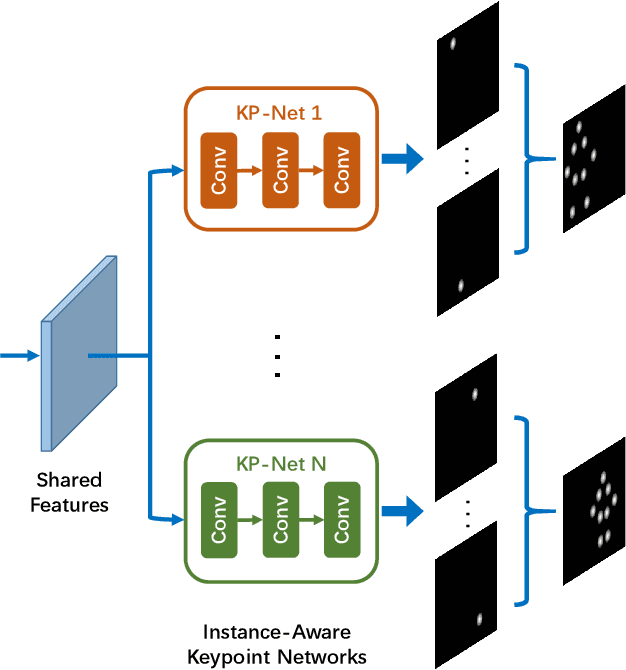

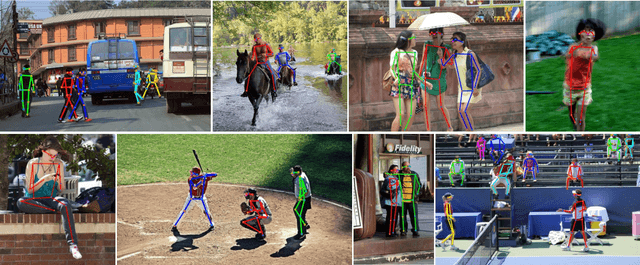

Abstract:Multi-person pose estimation is an attractive and challenging task. Existing methods are mostly based on two-stage frameworks, which include top-down and bottom-up methods. Two-stage methods either suffer from high computational redundancy for additional person detectors or they need to group keypoints heuristically after predicting all the instance-agnostic keypoints. The single-stage paradigm aims to simplify the multi-person pose estimation pipeline and receives a lot of attention. However, recent single-stage methods have the limitation of low performance due to the difficulty of regressing various full-body poses from a single feature vector. Different from previous solutions that involve complex heuristic designs, we present a simple yet effective solution by employing instance-aware dynamic networks. Specifically, we propose an instance-aware module to adaptively adjust (part of) the network parameters for each instance. Our solution can significantly increase the capacity and adaptive-ability of the network for recognizing various poses, while maintaining a compact end-to-end trainable pipeline. Extensive experiments on the MS-COCO dataset demonstrate that our method achieves significant improvement over existing single-stage methods, and makes a better balance of accuracy and efficiency compared to the state-of-the-art two-stage approaches.
* arXiv admin note: text overlap with arXiv:1911.07451, arXiv:2003.05664, arXiv:2102.03026 by other authors
PolarDet: A Fast, More Precise Detector for Rotated Target in Aerial Images
Oct 17, 2020



Abstract:Fast and precise object detection for high-resolution aerial images has been a challenging task over the years. Due to the sharp variations on object scale, rotation, and aspect ratio, most existing methods are inefficient and imprecise. In this paper, we represent the oriented objects by polar method in polar coordinate and propose PolarDet, a fast and accurate one-stage object detector based on that representation. Our detector introduces a sub-pixel center semantic structure to further improve classifying veracity. PolarDet achieves nearly all SOTA performance in aerial object detection tasks with faster inference speed. In detail, our approach obtains the SOTA results on DOTA, UCAS-AOD, HRSC with 76.64\% mAP, 97.01\% mAP, and 90.46\% mAP respectively. Most noticeably, our PolarDet gets the best performance and reaches the fastest speed(32fps) at the UCAS-AOD dataset.
 Add to Chrome
Add to Chrome Add to Firefox
Add to Firefox Add to Edge
Add to Edge